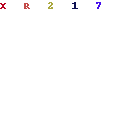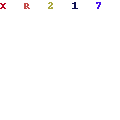The answer is yes.

Binary Blitz software regularly makes an excess of $1,000 a day, even when he has no idea how or why.
See, Binary Blitz is unlike anything else, because if you know nothing about finance whatsoever, you'll still be able to make money.
Other softwares require you to do all of this and more, but not Binary Blitz.
Binary Blitz simply uses my risk and reward formulas to profit from what Wall Street predicts the future price of an item to be.
=> See how does it work
=> How to make money
| In the earliest non-electronic information processing devices, such as Jacquard's loom or Babbage's Analytical Engine, a bit was often stored as the position of a mechanical lever or gear, or the presence or absence of a hole at a specific point of a paper card or tape. The first electrical devices for discrete logic (such as elevator and traffic light control circuits, telephone switches, and Konrad Zuse's computer) represented bits as the states of electrical relays which could be either "open" or "closed". When relays were replaced by vacuum tubes, starting in the 1940s, computer builders experimented with a variety of storage methods, such as pressure pulses traveling down a mercury delay line, charges stored on the inside surface of a cathode-ray tube, or opaque spots printed on glass discs by photolithographic techniques. In the 1950s and 1960s, these methods were largely supplanted by magnetic storage devices such as magnetic core memory, magnetic tapes, drums, and disks, where a bit was represented by the polarity of magnetization of a certain area of a ferromagnetic film, or by a change in polarity from one direction to the other. The same principle was later used in the magnetic bubble memory developed in the 1980s, and is still found in various magnetic strip items such as metro tickets and some credit cards. In modern semiconductor memory, such as dynamic random-access memory, the two values of a bit may be represented by two levels of electric charge stored in a capacitor. In certain types of programmable logic arrays and read-only memory, a bit may be represented by the presence or absence of a conducting path at a certain point of a circuit. In optical discs, a bit is encoded as the presence or absence of a microscopic pit on a reflective surface. In one-dimensional bar codes, bits are encoded as the thickness of |


Nenhum comentário:
Postar um comentário
Deixe seu comentário aqui